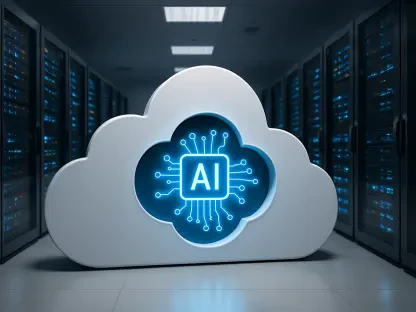In the rapidly evolving landscape of the energy industry, Chevron stands out as a pioneering force, utilizing cutting-edge technologies to redefine its operations. By integrating artificial intelligence (AI) and cloud computing, Chevron is addressing the challenges of data processing and overall operational efficiency. This partnership with tech giants like Microsoft and SLB (formerly Schlumberger) under the ambitious ‘Triple Crown’ project not only aids Chevron in modernizing its processes but also sets a paradigm for innovation in energy.
Analyzing AI and Cloud Technologies
At the core of Chevron’s transformation is AI-driven data processing and analytics. These technologies enable Chevron to seamlessly process and extract valuable insights from vast data reserves, significantly enhancing decision-making capabilities. AI plays a critical role in processing seismic data, optimizing reservoir development, and improving drilling operations. By enabling quick data retrieval and analysis, AI facilitates more informed decisions, ultimately boosting operational efficiency.
Simultaneously, cloud computing enhances operational efficiency by providing scalable IT resources. Cloud platforms allow Chevron to optimize workloads, manage complex data sets, and reduce infrastructure costs. Moreover, using cloud services, Chevron accelerates its workflows, ensuring timely delivery of critical information across its global operations. These integrated systems improve responsiveness and streamline energy exploration and production processes.
Pioneering Innovations and Emerging Trends
Chevron’s collaborations with Microsoft and SLB have fostered significant innovations, setting new benchmarks in energy technology. One notable development is the capability to shorten planning cycles for deepwater wells, previously spanning over a month, to now as little as a single day. This leap in efficiency highlights the transformative power of AI and cloud solutions in reducing operational timelines and costs.
Emerging trends in AI systems reveal a movement toward modular design. Chevron’s emphasis on modularity ensures adaptability and flexibility, allowing AI systems to scale efficiently across various processes. As users’ needs evolve, additional functionalities are seamlessly integrated, demonstrating a focus on evolving systems that cater to complex workflows.
Practical Applications Across Energy Sectors
Chevron’s use of AI and cloud technologies is evident across its sectors. The company employs these systems in exploration, drilling, and well management activities. For example, advanced tools like FDPlan enable precise subsurface modeling, aiding in strategic reservoir development. Similarly, DrillPlan and DrillOps optimize drilling procedures, reducing planning time and enhancing accuracy.
Moreover, the implementation of ‘Chevron Assist,’ a chat interface for managing health, safety, and environmental standards, illustrates a commitment to improving procedural adherence. This tool provides easy access to necessary documents, streamlining operational teams’ integration efforts and fostering a safer working environment.
Overcoming Challenges and Limitations
Despite the promising advancements, Chevron faces certain challenges with AI and cloud adoption. Technical complexities can present obstacles, requiring ongoing development to ensure seamless integration and functionality. Regulatory considerations and market dynamics add another layer of complexity, necessitating proactive approaches to align with standards and expectations.
Efforts to surmount these challenges involve fostering trust in AI tools. Chevron emphasizes building reliable systems aligned with both corporate goals and user expectations. Ensuring user adoption through transparency and functionality is crucial for maximizing the benefits of these technological investments.
Future Prospects and Long-term Impact
Looking ahead, Chevron’s strategic use of AI and cloud technologies is set to redefine industry standards. Anticipated breakthroughs could include even faster data processing and more sophisticated AI-driven insights, potentially revolutionizing exploration and production activities. These advancements hold promise not only for operational enhancement but also for broader societal benefits, including improved safety and environmental stewardship.
As Chevron continues to align technological progress with business aims, there is vast potential for AI and cloud tools to influence the future of the energy sector. Their impact, driven by innovation, can lead to unprecedented improvements in efficiency, sustainability, and competitiveness across the industry.
Synthesis and Reflection
The review of Chevron’s integration of AI and cloud technologies revealed a substantial shift in its operational dynamics. These technologies have already brought about efficiency gains and improved decision-making processes. Though challenges remain, Chevron’s focused, strategic approach and commitment to innovation position the company to handle future advancements effectively. The positive trajectory of these endeavors illustrates a promising path for harnessing technology to drive meaningful, long-term improvements in the energy sector.









